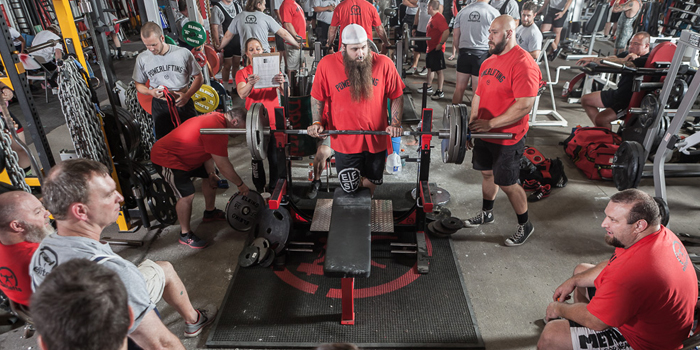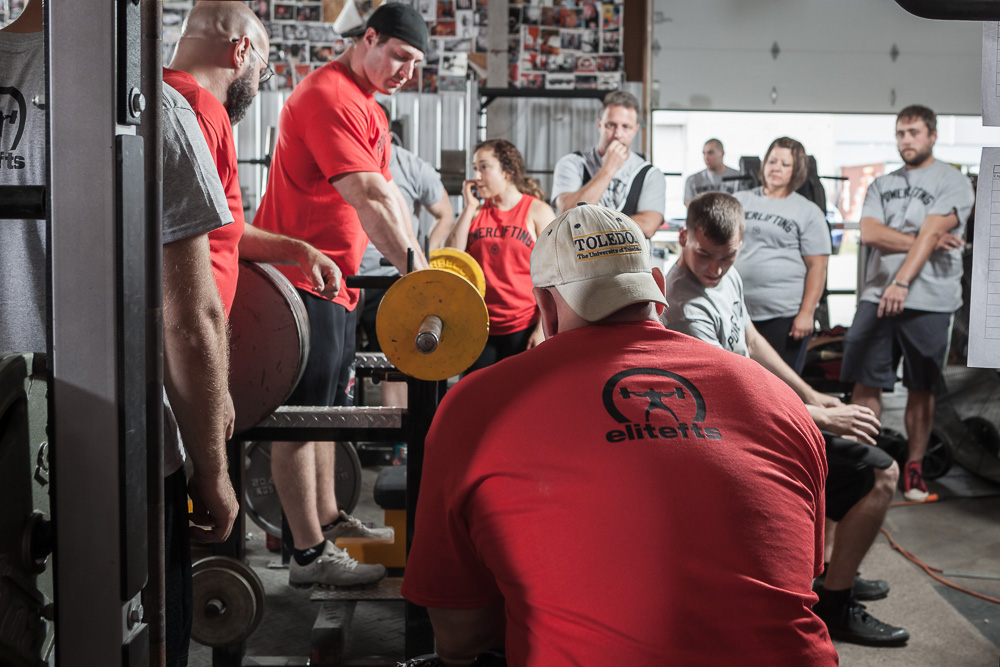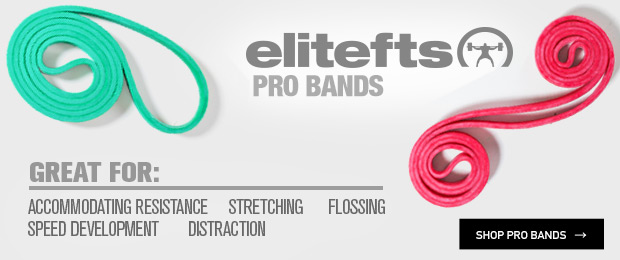
This article was originally published on August 10th, 2006
The role and reputation of the dynamic bench press has received nothing but a bad rap these days. And I have to admit that I am partly to blame. I ditched the dynamic bench press for almost a year and still made progress, so it was hard for me to give it its due.
Then Joe DeFranco wrote “Westside for Skinny Bastards” and completely wiped out whatever sympathizers to the dynamic bench remained. Like every Baldwin brother other than Alec, the dynamic bench was left out, alone and withered on the streets of despair.
MORE: Big Bench Rules to Fix Your Weak Point
But I’m here to tell you that the dynamic bench is not useless. It may not be the best thing in the world but neither are your lifts, so listen up. Everyone asks this question, “What should I do—the dynamic bench press or use a repetition method like Joe talks about in his WS4SB program?” It’s like they are making Sophie’s choice. But guess what? You can do both, and you probably should do both.
What?
Just because you “choose” one or the other doesn’t mean you are committed to it for the long haul. We are not asking for a marriage-esque commitment. This is like an extended love affair over spring break. So don’t be afraid to bang away for awhile and move on.
I recently began using the dynamic bench press in my workouts and noticed very quickly how much speed I had lost. After a few sessions (three to be exact), I found myself quicker and more explosive.
Something I had been playing around with was doing speed work for about five sets and then from there going to my max effort exercise. I felt stronger and faster on my max effort work. For example:
- Dynamic bench press: 5 sets of 3 reps at 225
- 2-board press: 315 x 1, 365 x 1, 405 x 1, 425 x 1, 435 x 1
So for those of you who are on the fence with speed work, here is my proposal to you. Do three DE bench sessions with speed work. After these three weeks, switch to repetition method work ala Joe Defranco’s WS4SB. There are some things that don’t have to be trained all the time, and the dynamic bench is (for me) one of them. But that doesn’t mean I should have totally disregarded it. I need to come back to it periodically (in this case, the magical three weeks) to be able to improve on it without suffering from the vicious elbow and shoulder problems that seem to haunt this style of training.
LISTEN: The Podcast for Skinny Bastards with Joe DeFranco
Here are some examples of speed work:
Straight Weight
- 8 sets of 3 reps at 55–60%
Chains (two chains/side)
- 8 sets of 3 reps at 50%
- Be sure that the chains are set up correctly and your speed is good.
Bands
- 8 sets of 3 reps at 40%
- Mini bands are used—approximately 30–40 pounds at the bottom and 75–85 pounds at lockout.
Alternatives
I was talking to a friend of mine, and this is what he has been using for speed work:
- 15 sets of 1 rep (the weight waves every three sets)
- 3 sets of 1 rep at 60%
- 3 sets of 1 rep at 65%
- 3 sets of 1 rep at 70%
- 3 sets of 1 rep at 75%
- 3 sets of 1 rep at 80%
(I have not tried this so I’m not sure about it.)
Wave Method
To use this method, perform three sets at a given percentage and move up. This is a great way to do speed work because you will generally get faster as the sets move on.
- 3 sets of 3 reps at 45%
- 3 sets of 3 reps at 55%
- 3 sets of 3 reps at 65%
Use the percents as a guideline. The point is to increase the weight as the session moves on. You can use this with bands, chains, or straight weight. The percentages listed above are for either straight weight or chains.
Rest Periods
I rest enough between each set to allow for the purpose of the day: to move the bar from point A (chest) to point B (lockout) as quickly as possible. Sometimes this rest period is 30 seconds, and other times it is two minutes. I never lose focus of the reason for the movement. This allows me to adjust throughout the workout. I am not tied down to a certain rest period.
Grips
I like to use a number of different grips during my sessions, and I have no real rhyme or reason for using one or the other. Here are the measurements of the distance between my index fingers for my different grips:
- 17.5 inches
- 23 inches
- 26 inches
- 29 inches
Problems
One of the biggest problems that I had with dynamic benching is the strain on my elbows and shoulders. I hope to remedy this by doing the following things:
- Using three week waves and then moving to rep work for three weeks.
- Lowering the bar under control, pausing slightly, and pushing back up.
- Not dropping the bar, as this immediately begins killing me.
Conclusions
- You don’t have to be married to dynamic work or repetition work — you can do both.
- Keep the cycles for about three weeks and switch.
- Remember why you are doing what you are doing.
- Next time, we will talk about the repetition method and how to use that.










